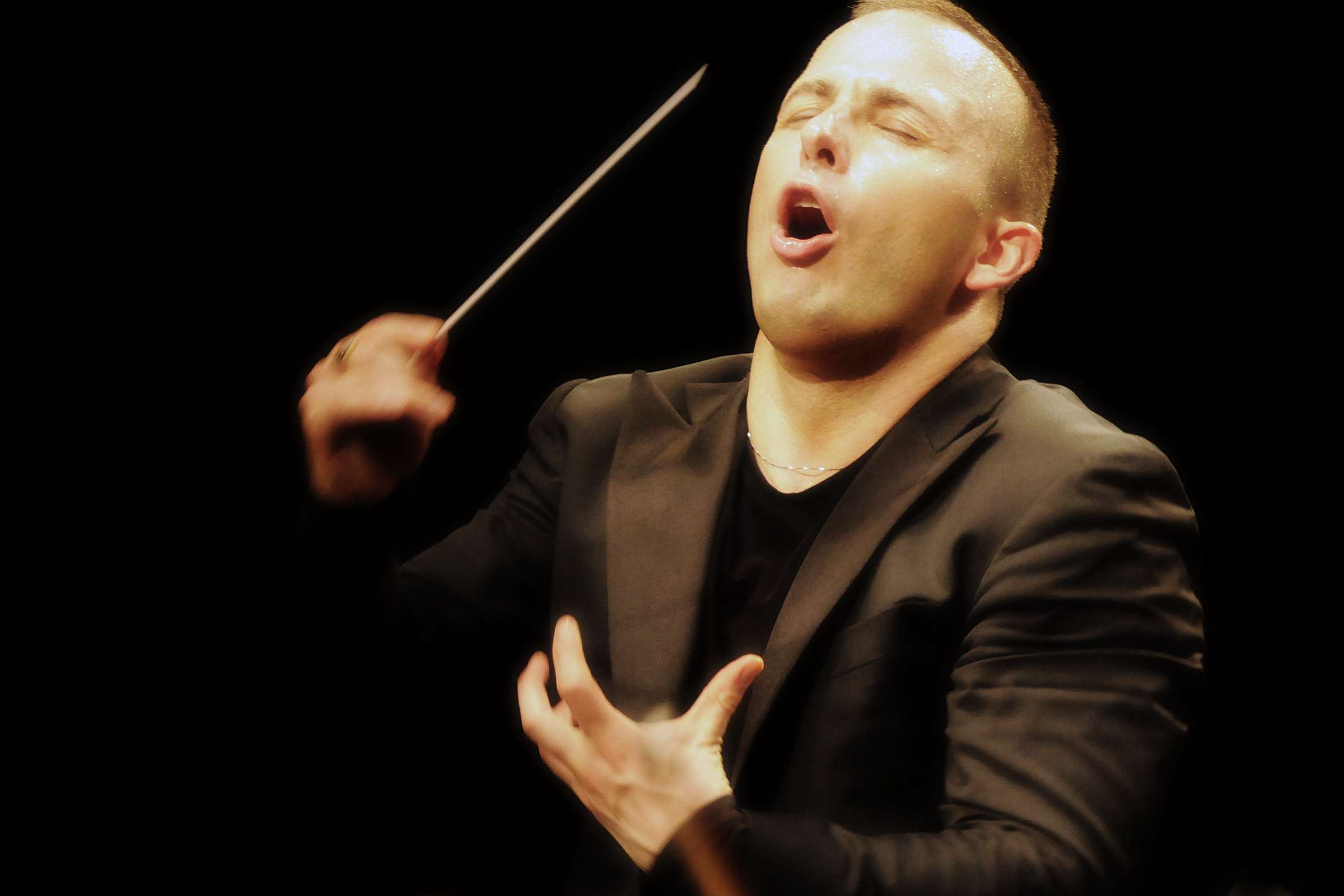|
Back
The Festival de Lanaudière Opens its 34th Season Montréal
Amphithéâtre Fernand-Lindsay
07/09/2011 -
Ludwig van Beethoven: The Consecration of the House Overture, Op. 124 – Missa Solemnis, Op. 123: “Kyrie”, “Credo” & “Agnus Dei” – Symphony No. 9 in D minor, Op. 125
Layla Claire (Soprano), Julie Boulianne (Mezzo-soprano), John Tessier (Tenor), Nathan Berg (Baritone)
Chœur de l’Orchestre Métropolitain, Chœur Fernand-Lindsay, Orchestre Métropolitain, Yannick Nézet-Séguin (conductor)

Y. Nézet-Séguin (© Christina Alonso/Courtesy of F. de L.)
The Festival de Lanaudière, the annual summer music festival situated about an hour’s drive northeast of Montreal, inaugurated its 34th season on Saturday night. Yannick Nézet-Séguin, leading his home orchestra, the Orchestre Métropolitain (from Montreal), recreated a program given on May 7, 1824 at the Kärntnerthor Theatre in Vienna which included the première of Beethoven’s Ninth Symphony.
The concert began 25 minutes late, due to an unexplained 15-minute delay, then by speeches by two administrators. The first half was a disappointment. Perhaps because the orchestra had to sit quietly on the stage for so long, the Consecration of the House Overture got off to a bad start. The winds were unfocussed, the brass lumbering, the bassoon almost inaudible under the blare of the brass, and most sections showed a thorough lack of preparation and confidence. There was little that was either grand or ceremonial in the introduction. The sound was tinny and puny. The fugal allegro, however, took off at a spritely pace and the violin section sang with confidence and in unison, carrying the work to a satisfactory conclusion.
The three selections from the Missa solemnis (“Kyrie”, “Credo”, “Agnus Dei”) had some good moments, but again, showed lack of preparation and rehearsal. The choir, a mix of professionals and amateurs, lacked balance and a sense of musical line. The bass section was good, the mezzos usually inaudible and sopranos barely, just barely, made their high notes. Nevertheless, there was a fine, jubilant opening to the Credo as well as an ethereal moment during the crucifixion. The biggest problem was with the composition of the orchestra itself. A meagre six cellos and five basses were aligned against a full complement of violins and violas (more about this later).
The four soloists were up to the task, but soprano Layla Claire seemed to be putting on her own show. Her sterling, clarion voice often overwhelmed the more serious, restrained mezzo-soprano Julie Boulianne. Tenor John Tessier sang well but his voice sounded pinched and could have used more volume. Baritone Nathan Berg seemed to be saving himself for the Ninth.
The Ninth Symphony opened with a sense of compressed energy and anticipation. Conducting without a score, Nézet-Séguin established the broad symphonic line from the outset, and struck a good balance among all sections that followed through the entire 70-minute performance. (Only in the middle of the third movement the orchestra could have produced a warmer, more fluid Andante.) The winds showed confidence and the horn solos were well-honed. The scherzo was lively and frenetic and a sense of joy permeated the uplifting fourth movement.
The star of the show was unquestionably Nézet-Séguin. I’ve never seen him work so hard. From trying to temper the volume of Layla Claire’s voice, to encouraging John Tessier during the “An die Freude”, to attempting to draw more sound from the cellos and basses, he gave his all.
The orchestra too gave its all; unfortunately there was just not enough of it. Beethoven used 24 violins, 10 violas, 12 cellos and 12 basses at the première. At Lanaudière, as I mentioned earlier, there were a mere six cellos and five basses. I have heard superb performances of this symphony with reduced orchestras on original instruments, and I have heard wonderful renditions from “big” orchestras like the Berlin or Chicago Philharmonics. But an “in-between”, or unbalanced, orchestra (i.e., one with a surplus of violins and violas and a dearth of cellos and basses) cannot provide a satisfactory listening experience for this masterpiece. Orchestre Métropolitain should have at least engaged some extra players for this performance. At best they should hire more players. It must have been exceedingly frustrating for Nézet-Séguin.
On a more positive note, it was wonderful to see the sold-out amphitheatre of some 2000 seats and the lawn area filled to overflowing. Someone is doing something right!
The Festival de Lanaudière’s Website
Earl Arthur Love
|